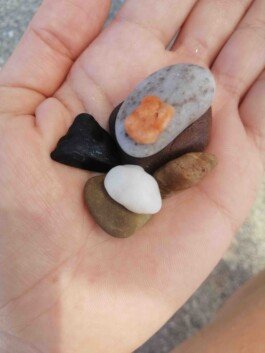
A chat with Krystel Khoury, July 2021
by Jana Al-Obeidyine

Krystel Khoury is a dancer who holds a Master's degree in Performing Arts from Université de Lyon and a Ph.D. in the anthropology of dance and intercultural dynamics from Auvergne Université. She researches embodied knowledge and political discourses, dance education, artistic processes, and anthropological theories.
Since 2019, she has been the head professor of ISAC, Académie Royale des Beaux-Arts, in Brussels. She is also the grants coordinator at Mophradat, a Belgium and Greece-based art organization that supported a Dance Mag during the strenuous year of 2020.
Born in Lebanon and residing in Belgium, Krystel is involved in all sort of embodied explorations on many levels and I am delighted to have had a chance for a brief chat with her.
We both hold degrees in the anthropology of dance, so I know well that the discipline is relatively new and not very well known; could you tell us more about it?
Oh wow, I did not see that question coming! It is hard to summarize what this discipline entails in just a few words. Let’s say that it is interested in understanding the meanings of dance and dancing and what they are about rather than what they are. As an anthropological discipline, it follows an empirical methodology and uses specific analytical tools, fieldwork immersion, participatory observation, explicit interviews, etc. with the idea of going into the meaning and function of movements in contexts.
You are the director of ISAC | Institut Supérieur des Arts et Chorégraphies in Brussels. What kind of training does the Institute provide?
ISAC is an artistic research program focused on the human body, looking to it as a reflection of the world we live today, and also as a creative tool for expressing, reading and transforming the worlds in which we live. Being part of the Royal Academy of Fine Arts in Brussels means that, as a platform, it is at the intersection of choreographic practices and the visual arts. It is very experimental and organic, designed around different formats of learning and unlearning. Our formats include masterclasses and in-depth encounters with artists and choreographers. We offer opportunities for discussions, transmission, and creative labs where young artists are invited to develop their individual and collective projects. I think one of the great values of the ISAC is that it allows sharing to be done in a dialogical and horizontal way with a back and forth between practice and theory, allowing each member to nourish their artistic approach with autonomy.
What about your work at Mophradat? It is a different yet similar line of work; what does the Mophradat experience bring you?
I have been working with Mophradat since 2016. My relation to what we do at Mophradat is both transforming and transformative. I am constantly rethinking the ethics, discourses, and values that we would like, as a team, to share and work within the artistic fields. I enjoy challenging what I think I know! I enjoy shifting my understanding of things and experimenting with new ideas and programs and observing how they develop and what they can stir. I live all this as a learning/ unlearning process and in that sense, I consider myself lucky!
The Touch issue went to print with the support of Mophradat; we are very grateful for that! What was your impression when you received it?
It was really great to receive the Touch issue and actually to touch it! From touch as a gesture to touching as an experience, having it in my hands was somehow an extension to my arms. The unusual format of a Dance Mag in general and the textured cover here, in particular, transforms it into an artistic object, inviting the reader to go through a beautiful sensorial and aesthetical experience in addition to the writings and inside design. In that regard, I have to say that I really enjoyed discovering each piece and its singularity in approaching this topic. My reading unfolded in a very organic way. I felt all the pieces were related and “touching” each other in a way and this profoundly touched me!
Based on your expertise, what do you think a Dance Mag stands for? And what gaps does it cover?
In my eyes, a Dance Mag combines an editorial, curatorial and visual design practice interested in exploring questions that are relevant to embodied experiences (including dance), unconventionally and creatively.
Rather than covering “a gap,” I see it as a space for new possibilities to engage with a broader understanding of what we think or know or see as “dance” that is not reduced to a series of movement or performative moments, but as a positionality of our body-minds in specific time and space which makes writing about it or reflecting on it through writing infinite.
If you were to change or add something to a Dance Mag, what would that be and why?
a Dance Mag is created, thought of, and designed with such care and sensitivity when it comes to the relationship between content and form, trying to be in real osmosis with the question you are interested in exploring, that seems to be changing every time! So, I am more excited to see how as a reader having access to a Dance Mag can change and/or add something to my experience and understanding of dance.